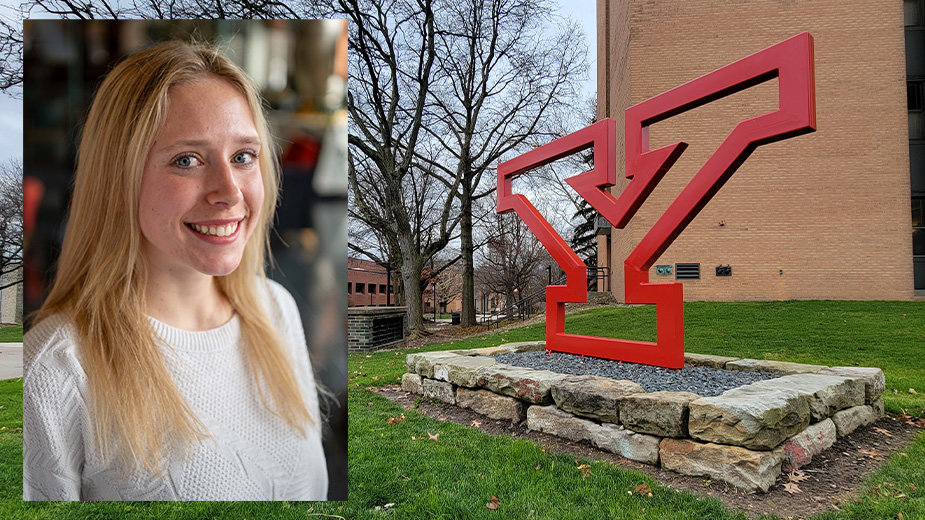Team NEO Finds Growing Skills Gap
YOUNGSTOWN – Jobs in the Northeastern Ohio too often lack the wages to sustain a family or do not have enough people trained to fill them, according to the new Aligning Opportunities report prepared by Team NEO.
The sixth edition of Aligning Opportunities was released this morning, reflecting the demand and supply gap in the workforce that continues to hamper growth in Northeastern Ohio, the 18-county region including Trumbull, Mahoning and Columbiana counties.
The data-driven report shows a growing gap between demand for talent to fill jobs and careers in the region and the number of residents with the credentials or degrees to fill them.
Labor force participation in the region is the same as the national average, around 60%. However, the report shows Northeastern Ohio has a smaller number of working age people, defined as those age 16 to 65, than the rest of the nation.
Jacob Duritsky, vice president of research and strategy at Team NEO, notes the region has lost population and people are aging so it continues to be important to keep our talent.
“We need to connect people who are here to the labor force in bigger ways if we’re going to grow out of this, because we’re not going to simply see an injection of population in Northeast Ohio,” Duritsky said.
Talking to young people and connecting to more women and minorities, which are significantly under-represented in many of the highest paying fields, is one of the suggestions the report makes for the state to retain talent.
There are career pathways requiring less than a four-year degree and the report suggests a need for growth of in-demand jobs across industries.
There are jobs with a bachelor’s degree that can offer a family-sustaining wage, which it defines as two adults and two children with one parent working at $72,571 annually in Cuyahoga County according to the MIT Living Wage Calculator.
The calculator shows the same family of four would need a wage of $69,618 in the Youngstown-Warren-Boardman area and $70,512 in Columbiana County.
But the new report did not just focus on careers with a bachelor’s degree, which most people in the region do not have.
In Northeastern Ohio, 33% of residents have only a high school diploma with another 9% have only some high school education, according to the report. Another 21% have some college, but only 9% an associates degree and 29% have a bachelor’s degree or higher.
“There are good jobs that people can go into that don’t necessarily require a four-year degree,” Duritsky said. “Four-year degrees, bachelor-plus, they’re not for everyone and that’s okay. There are still opportunities in the market. So that’s what I’m really encouraged about in this report, is that we’re evolving the way we’re thinking about that framework, so we’re thinking holistically about STEM, but we’re also thinking about those (careers) that don’t require bachelor’s.”
Duritsky said it’s about looking at a broader career path. Many of these jobs are a great place to start and then possibly evolve into a career. For instance, an electrician, who down the road becomes a small business owner in the field or someone who gets a CDL, enjoys being a driver, or eventually decides to start a distribution and logistics center.
The report lists the top 20 jobs in the region that require less than an associate’s degree and are expected to increase in the next five years. While the median annual salary of these jobs provides a living wage to sustain the employee, $30,680 in the Youngstown-Warren-Boardman region, none of them offer a high enough wage for the living wage for a family of four with only one adult employed.
Some of those top jobs, all with growth expected in the near future, include claims adjusters, examiners and investigators, median salary $65,022; electricians, $58,837; industrial machinery mechanics, $58,333; plumbers, pipefitters and steamfitters; $58,856; insurance sales agents, $56,255; and mobile heavy equipment mechanics, except engines, $54,022.
The new report also touts a long list of STEM related jobs, most of which have a median salary to support a family of four. However, most also require a bachelors degree or higher. The top jobs include computer and information research scientists, $108,677; actuaries, $100,653; chemical engineers, $99,800; software developers, $99,413; petroleum engineers, $98,667; information security analysts, $97,941; computer hardware engineers, $94,677; and psychologists, $94,083.
There continues to be large demand for workers in the areas of health care, manufacturing and IT in the region. Total demand for health care was 48,363 workers, including 18,259 entry-level jobs; manufacturing with a total demand of 26,962 jobs with 10,191 entry-level jobs; and 15,544 total demand for IT jobs, including 5,902 entry-level jobs. These careers have median salaries of $73,439 for health care, $42,383 for manufacturing and $86,862 for IT. Yet, in 2020, the region was behind in issuing enough credentials for those in-demand jobs. Only 13,992 were awarded in health care, 3,452 in manufacturing and 2,725 in IT.
After six years of collecting data, Duritsky notes the new report, the work of other organizations in the region and what people and organizations are doing with the knowledge continues to evolve.
Regional groups are working to look at ways to make sure we are selling Northeastern Ohio as a place to remain following the training or education.
“One of the things I really like about Aligning Opportunities and the reports associated with it, it really has (led to) slightly different conversations around talent and started to shape the way how we focus in on talent,” Durisky said.
The reports have evolved beyond just data to something driving strategy alignment, looking at what more can we do and helping the region to set goals, he said.
Copyright 2024 The Business Journal, Youngstown, Ohio.


